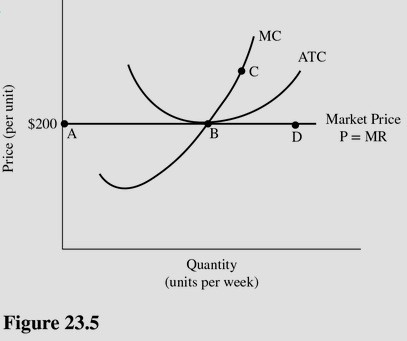A steady state is
A) a temporary equilibrium.
B) a Pareto Optimum.
C) a long-run equilibrium.
D) an economy with ongoing fluctuations.
C
You might also like to view...
The government of China has explicitly stated that the goal of its strict population control measures is to raise income per capita. What are the mechanisms at work in such a claimed relationship? Are there any counterarguments?
What will be an ideal response?
The moral hazard associated with managers whose productivity is difficult to quantify can be decreased with
A) piece-rate contracts. B) year-end bonuses. C) decreased wages. D) adverse selection.
What is the most likely consequence when people's preference for current consumption rises in relation to future consumption?
a. Interest rates will fall, and the rate of extraction of exhaustible natural resources will decrease. b. Interest rates will fall, and the rate of extraction of exhaustible natural resources will increase. c. Interest rates will rise, and the rate of extraction of exhaustible natural resources will decrease. d. Interest rates will rise, and the rate of extraction of exhaustible natural resources will increase. e. Interest rates will fall, and there will be no effect on the rate of extraction of exhaustible natural resources.
 Refer to Figure 23.5 for a perfectly competitive firm. Which of the following is not true for this firm at a price of $200?
Refer to Figure 23.5 for a perfectly competitive firm. Which of the following is not true for this firm at a price of $200?
A. The firm is using the fewest resources possible to produce each unit of output. B. The price is a reflection of the highest-valued good that could have been produced with the resources the firm used for the last unit it produced. C. The firm is practicing marginal cost pricing. D. The firm should leave this market in an effort to earn economic profits.